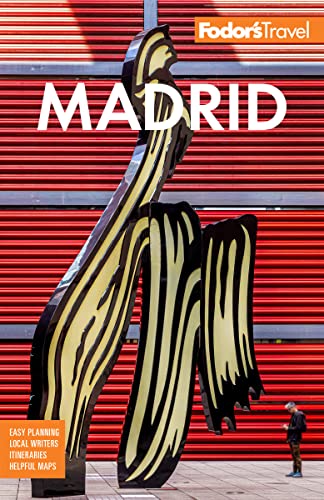Spanish Flamenco
Rule one about flamenco: You don’t see it. You feel it. The pain and yearning on the dancers’ faces and the eerie voices are real. If the dancers manage to summon the duende and allow this soulful state of emotion to take over, then they have done their jobs well.
Flamenco 101
Origins: The music is largely Arabic in its beginnings, but you’ll detect echoes of Greek dirges and Jewish chants, with healthy doses of Flemish and traditional Castilian thrown in. Hindu sways, Roman mimes, and other movement informs the dance, but we may never know the specific origins of flamenco. The dance, along with the nomadic Gypsies, spread throughout Andalusia and within a few centuries had developed into many variations and styles, some of them named after the city where they were born (such as malaguenas and sevillanas) and others taking on the names after people, emotions, or bands. In all, there are more than 50 different styles (or palos) of flamenco, four of which are the stylistic pillars others branch off from—differing mainly in rhythm and mood: toná, soleá, fandango, and seguidilla.
Clapping and castanets: The sum of its parts are awe-inspiring, but if you boil it down, flamenco is a combination of music, singing, and dance. Staccato hand-clapping almost sneaks in as a fourth part—the sounds made from all the participants’ palms, or palmas, is part of the duende—but this element remains more of a connector that all in the performance take part in when their hands are free. Hand-clapping was likely flamenco’s original key instrument before the guitar, cajón (wooden box used for percussion), and other instruments arrived on the scene. Perhaps the simplest way to augment the clapping is to add a uniquely designed six-string guitar, in which case you’ve got yourself a tablao, or people seated around a singer and clapping. Dance undoubtedly augments the experience, but isn’t necessary for a tablao. These exist all throughout Andalusia and are usually private affairs with people who love flamenco. One needn’t be a Gypsy in order to take part in it. But it doesn’t hurt. Castanets (or palillos) were absorbed by the Phoenician culture and adopted by the Spanish, now part of their own folklore. They accompany other traditional folk dances in Spain and are used pervasively throughout flamenco (though not always present in some forms of dance).
Flamenco now: Flamenco’s enormous international resurgence has been building for the past few decades. Much of this revival can be attributed to pioneers like legendary singer Camarón de la Isla, guitarist Paco de Lucía, or even outsiders like Miles Davis fusing flamenco with other genres like jazz and rock. Today the most popular flamenco fusion artists include Rosalía and Fuel Fandango.
Flamenco Head to Toe
Wrists rotate while hands move, articulating each finger individually, curling in and out. The trick is to have it appear like an effortless flourish. Facial expression is considered another tool for the dancer, and it’s never plastered on but projected from some deeper place. For women, the hair is usually pulled back in touring flamenco performances in order to give the back row a chance to see more clearly the passionate expressions. In smaller settings like tablaos, hair is usually let down and is supposed to better reveal the beauty of the female form overall. The dancer carries the body in an upright and proud manner: the chest is out, shoulders back. Despite this position, the body should never carry tension—it needs to remain pliable and fluid. With professional dancers, the feet can move so quickly, they blur like hummingbird wings in action. When they move slowly, you can watch the different ways a foot can strike the floor. A planta is when the whole foot strikes the floor, as opposed to when the ball of the foot or the heel (taco) hits. Each one must be a “clean” strike or the sound will be off.




